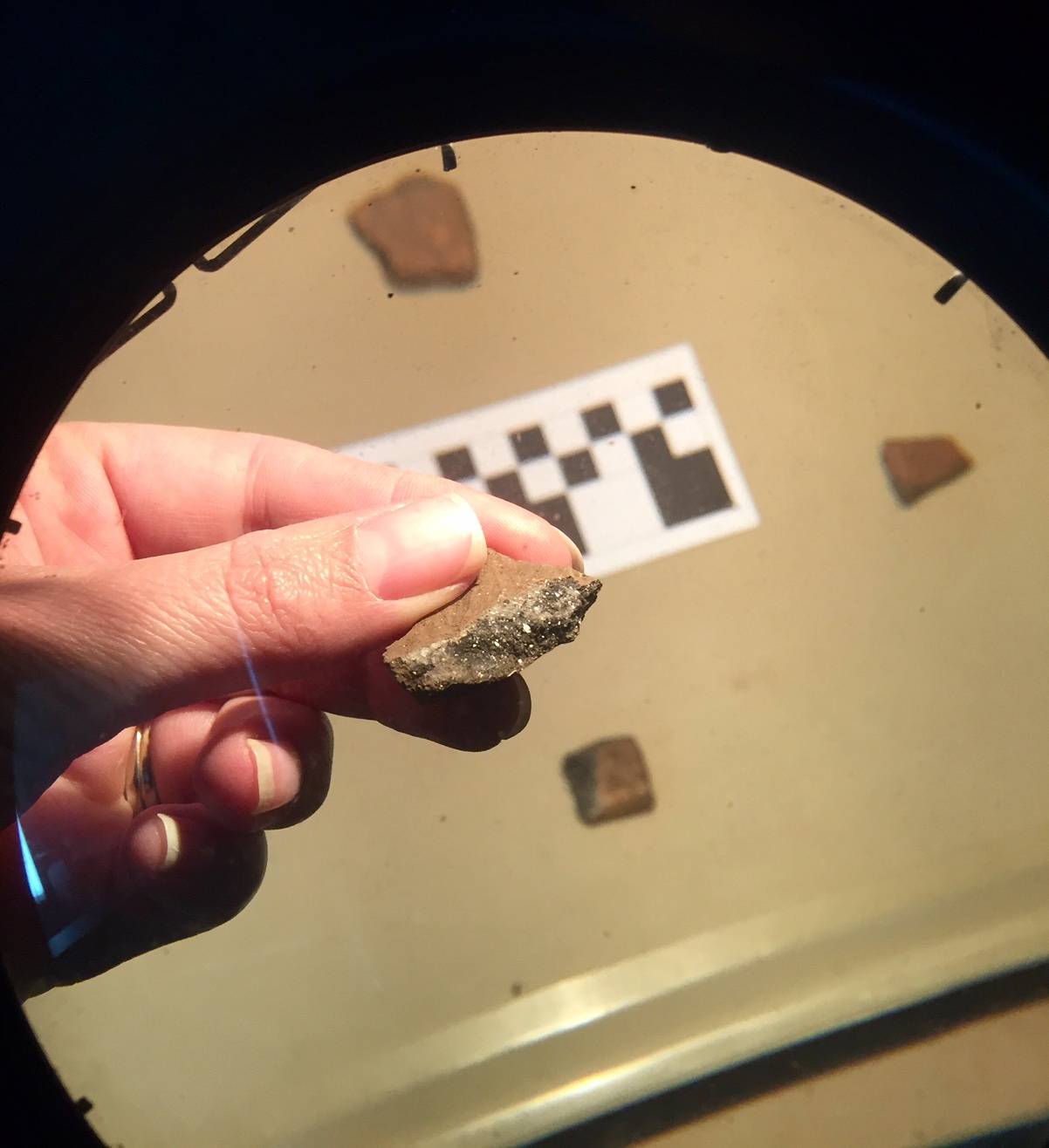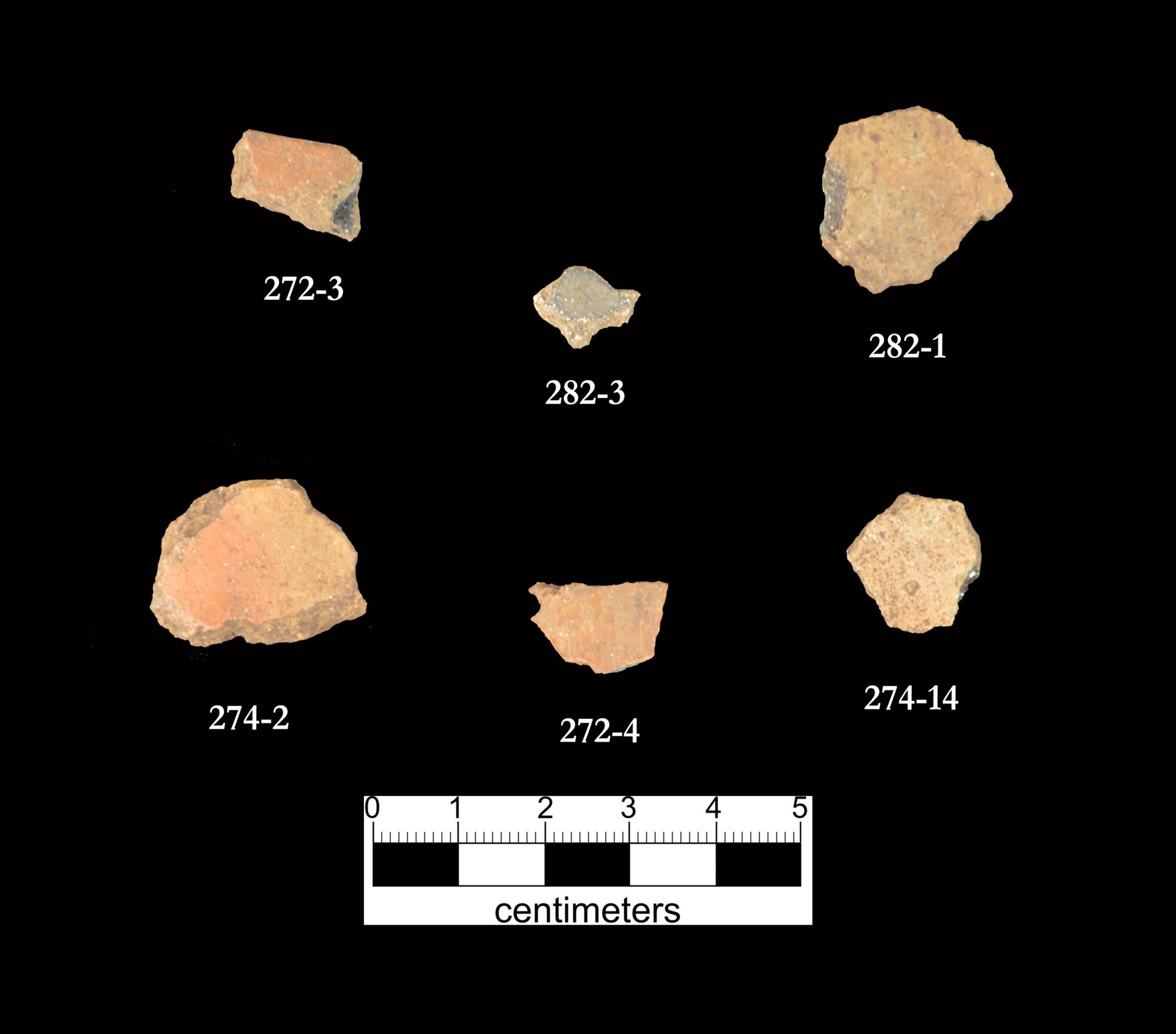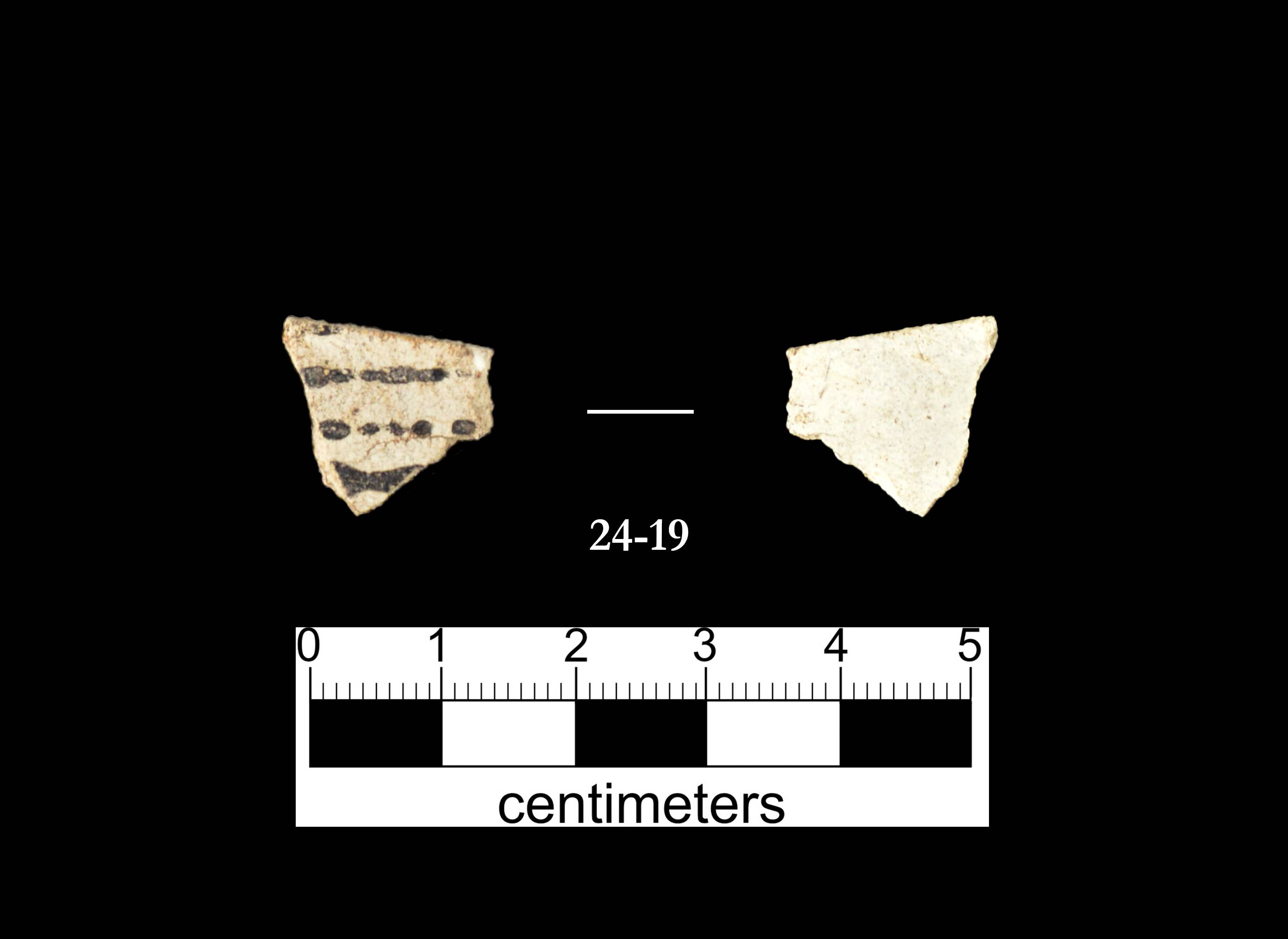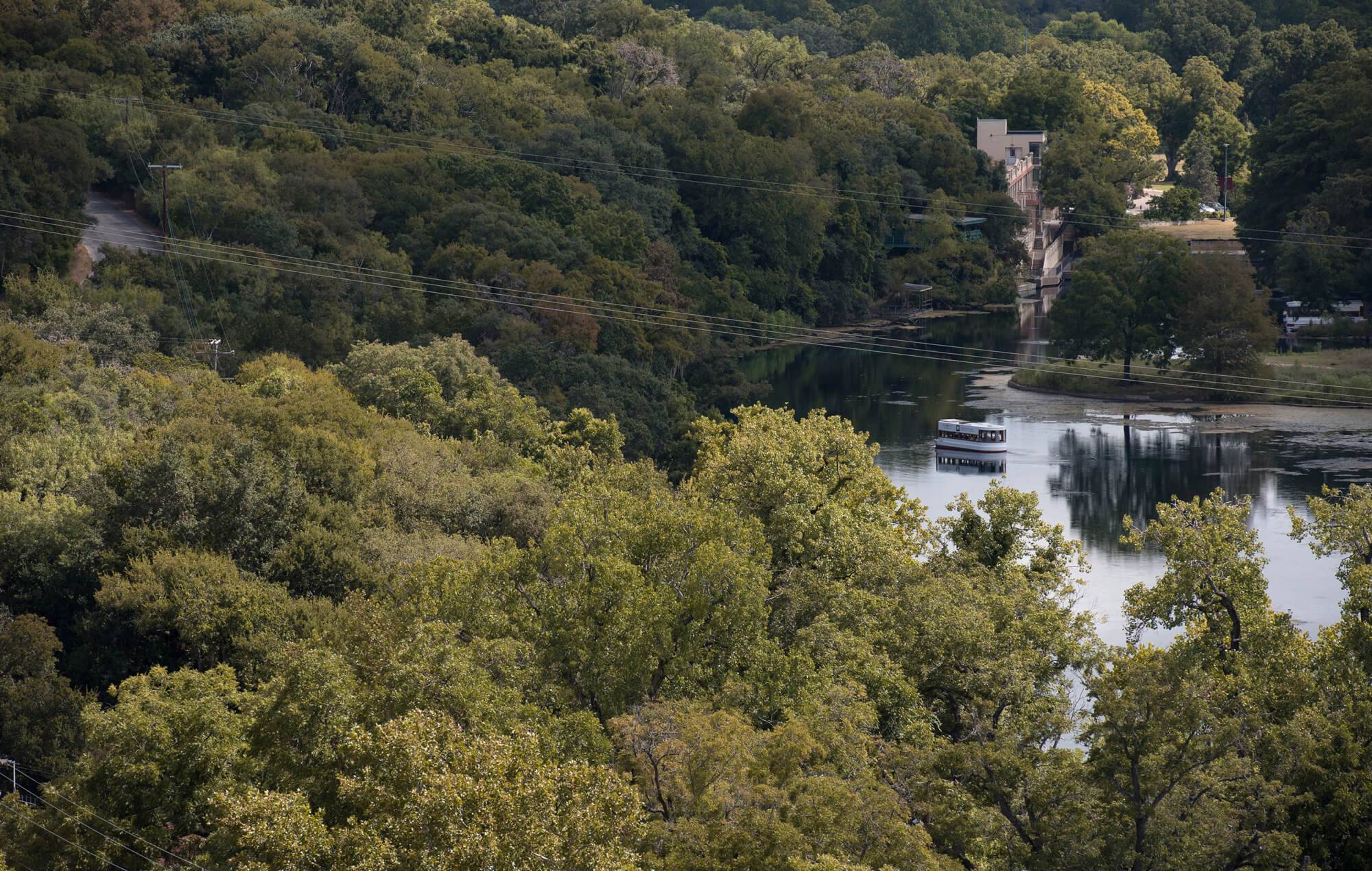Ceramics

Ceramic pots, bottles and jars were very important to people from the Late Archaic Period through the Historic Period for preparing, transporting, and protecting food.
The 2014 Spring Lake Data Recovery retrieved 90 ceramic fragments, or sherds, representing both prehistoric and historic ceramic vessels.
This is the largest collection of ceramic artifacts ever recovered from the Spring Lake Complex!
A complete inventory of the ceramic specimens recovered can be viewed here.
Macroscopic analysis was performed on a sample of 6 prehistoric sherds found from within the established Analytical Units. The goal of the macroscopic analysis was to define the surface treatment attributes of the vessels represented in the sample as well as to characterize the temper (additives) in the raw clays and firing conditions. Check out the results and photo below. Do you see any patterns?
| Time Period | Specimen | Provenience | Interior Surface Treatment | Exterior Surface Treatment | Paste Morphology, Inclusion | Paste Morphology, Inclusion Size | Paste Morphology, Texture | Wall Thickness (mm) | Vessel Fragment | Orafice diameter (in) | Interior Paste Color | Exterior Paste Color | Interior Firing | Exterior Firing |
|---|---|---|---|---|---|---|---|---|---|---|---|---|---|---|
| Late Archaic | 272-3 | Unit 36, Level 6 | Smooth | Polished | Sand | Small | Fine | 5.61 | Rim | 12 | 7.5YR5/4 | 7.5YR5/4 | Oxidized | Oxidized |
| Late Archaic | 272-4 | Unit 36, Level 6 | Brushed | Polished | Sand, Quartzite | Small | Fine | 5.89 | Body | N/A | 7.5YR6/3 | 7.5YR4/4 | Oxidized | Oxidized |
| Late Prehistoric | 282-1 | Unit 41, Level 5 | Polished | Polished | Limstone, Sand, Chert | Small-Moderate | Coarse | 4.9 | Body | N/A | 7.5YR4/2 | 7.5YR5/3 | Oxidized | Oxidized |
| Late Prehistoric | 282-9 | Unit 41, Level 5 | Polished | Polished | Limestone, Shell | Small -Moderate | Coarse | 4.97 | Body | N/A | 7.5YR4/1 | 7.5YR4/2 and 7.5YR5/2 | Reduced | Oxidized |
| Late Prehistoric | 274-2 | Unit 37, Level 5 | Smooth | Smooth | Limstone, Sand | Small, Moderate | Coarse | 10.5 | Body | N/A | 7.5YR5/6 | 5YR5/5 and 5YR5/6 | Oxidized | Oxidized |
| Late Prehistoric | 274-14 | Unit 37, Level 5 | Smooth | Smooth | Bone, chert | Small | Fine | 6.7 | Body | N/A | 7.5YR7/4 | 7.5YR6/4 | Oxidized | Oxidized |

This image presents the exterior views of the ceramic fragments from date-able contexts chosen for analysis. Specimens 272-3 and 272-4 were recovered from a Late Archaic context, while specimens 282-1, 282-9, 274-2 and 272-14 were recovered from Late Prehistoric contexts.
The Late Archaic sherds both appear to have been made with a sandy paste. Brushed sherds with sandy paste have been found in Toyah contexts from other prehistoric campsites throughout Texas and is also a technology associated with Coastal archaeological sites and Caddoan pottery.
Specimen 282-9 contains small bits of bone in the paste. Toyah potters often mixed crushed animal bone, and sometimes quartz sand or grog (crushed pottery), as tempering agents into the clay and water paste.

This ceramic fragment stands out from the rest! It has a very fine paste with black designs on one side. It was recovered from level 4 of excavation unit 21. Although this context was not assigned a time period, this interesting specimen resembles a coastal pottery type called Rockport Black on White. More information about this type of pottery can be found here on the Texas Beyond History website.
What do you think? Could this be evidence of trade with coastal cultures?
Interestingly, this would not be the first coastal artifact found at the Spring Lake site. Other coastal artifacts found here include a marine shell bead and a Morhiss projectile point with asphaltum on it's stem.
